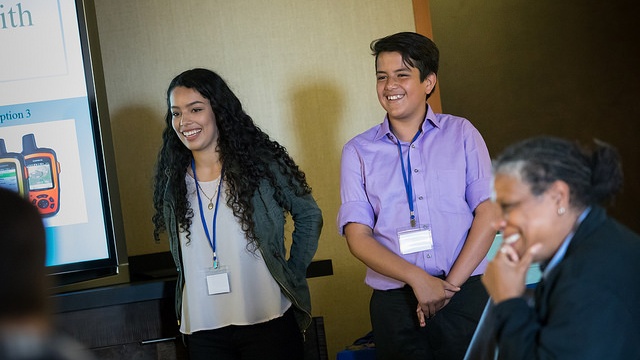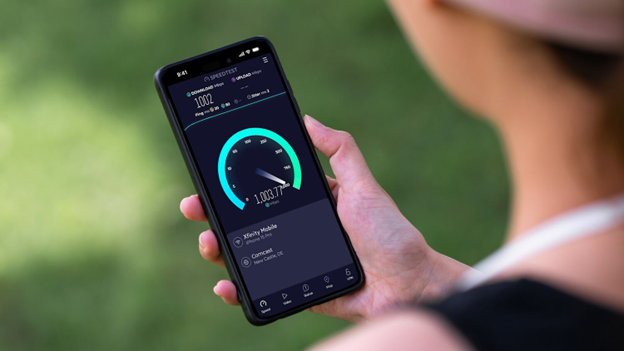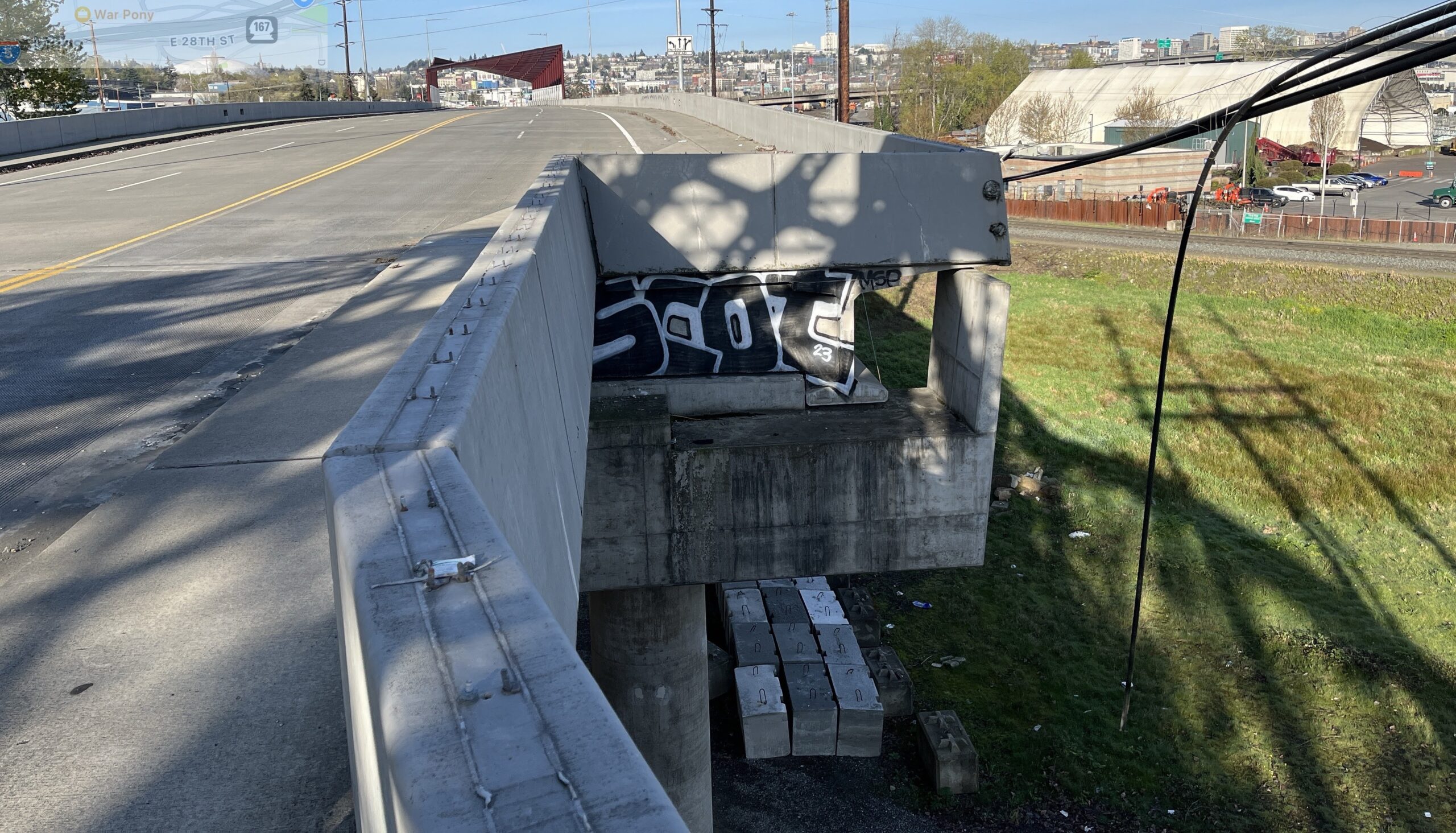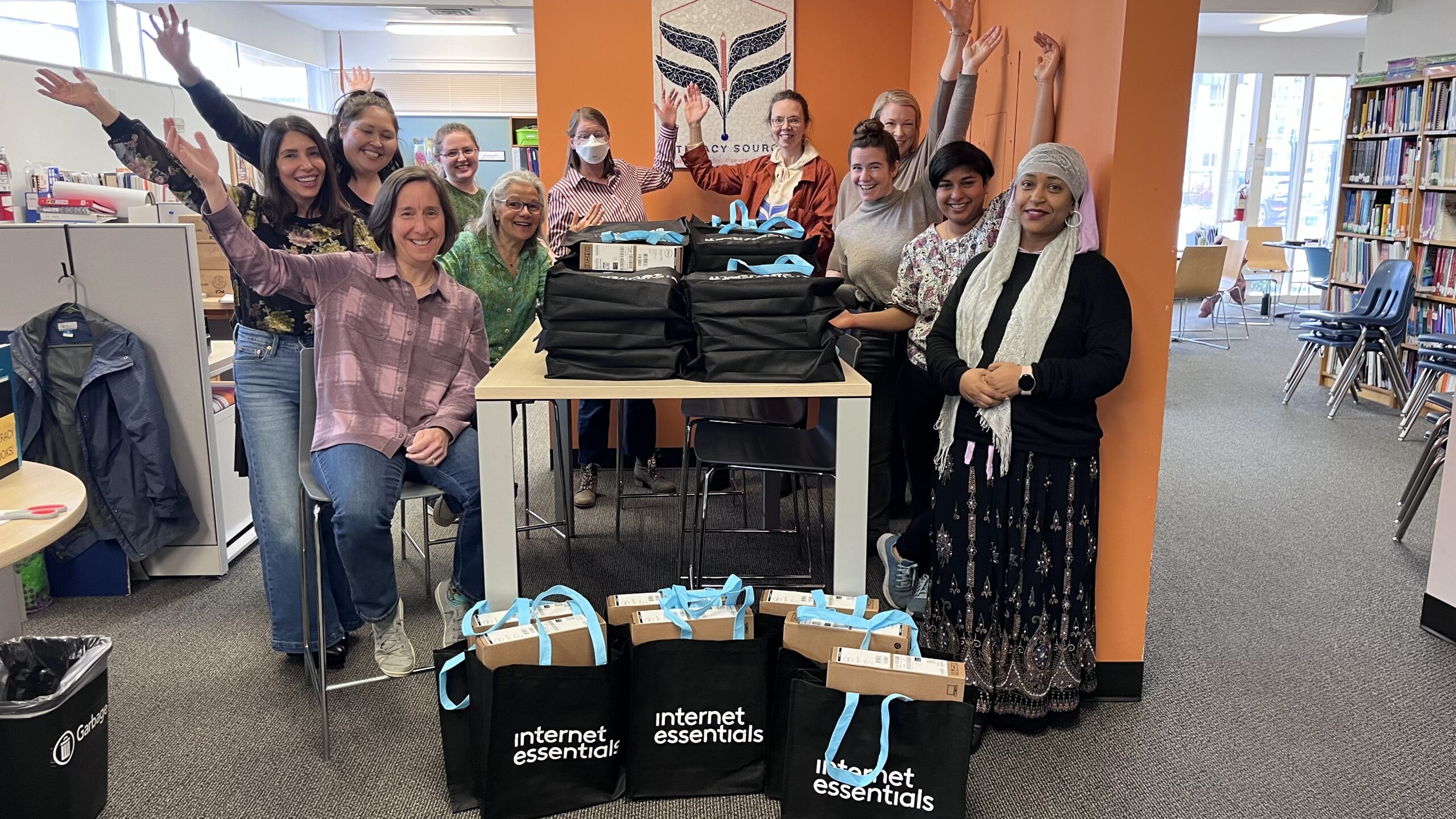Several teams of students presented ideas at the TAF/Comcast Technology Challenge for how to recover communications networks after a mock crisis. The winning team received $1,000 college scholarships: left to right, Zene Hall, Cody Small, Allison McIntyre and Juan Garcia-Bucio. The students came from TAF Academy, an innovative STEM-focused neighborhood school created in partnership with the Federal Way Public Schools district. Below, the students pose on the 11th floor balcony of Comcast Technology Solutions in Seattle, the offices of 250 engineers who provide video streaming and other business products and tech to companies around the world.
OK, so first it was bad enough that there was just a giant earthquake.
And then it was bad enough that when the Earthquake had ended and fissures appeared in the ground, out came streams of zombies. That was bad.
But there’s worse. Power is out, of course. Cables are snapped. Antennas that relay network signals from cell phones to Internet are down or without power. So this is when the panic starts to come. Because you’ve just realized: Oh no.
There’s no Internet. And the cell networks are down.
No Facebook. No phone calls. Wait … that means … no … no Snapchat?
With your phone on battery power, you get a picture of the zombie approaching you with his gaping, blood-stained mouth. Wow. You know you are going to own Instagram with this picture. But you have no way to share the photo online. With all the power of your thumb tip, you mash the icons on your phone. But … nothing. You’re not online.
Now it’s time to panic.
Starting with this scenario – parts of which we all here hope are a bit unlikely – Federal Way students who are part of Technology Access Foundation Academy participated in a unique STEM technology challenge presented by Comcast. Comcast supported the program to encourage STEM education and mentoring of youth in association with TAF, a longtime community partner. Teams of four students were paired with a Comcast executive mentor to face what we all very much hope is a hypothetical scenario: How would you restore communications after an Earthquake and Zombie Apocalypse when one member of your team has been hurt?
It’s probably a little obvious that the zombie part of the scenario was to add some color. But the question of how you restore communications after a disaster is very real. When a disaster happens, everyone from emergency personnel to families all need to find each other and learn what’s going on. This is a very significant challenge companies like Comcast all spend time planning for. The students recently took a field trip to a downtown Seattle high-rise to present their answers to a panel of judges at Comcast Technology Solutions, a Comcast division which provides video streaming solutions and other support to businesses around the world.
Students came up with different ideas, ranging from the use of walkie-talkies to the use of drones with routers on them with signal rounded through a central terrestrial location (in telecommunications, we call such a place a ‘head-end.’) And this mix of creativity coupled with real-world solutions made both judges and the organizers of the event happy, because the students clearly engaged the technology and learned a lot along the way.
“These students dug in and came up with creative and practical solutions to the problem scenario they were given,” said Hans Hechtman, Comcast’s director of external affairs in Seattle, who was among a large crowd of Comcasters who enjoyed the presentations.
The students also had to grapple in the scenario with the fact that one team member had been injured; and of course this was in the scenario to underscore to the youth that after a natural disaster, yes the Internet’s pretty important, but so is safety. And as the world tries to put its networks back together, the top priority will be saving lives.
There were touches in their plans that you’d expect from lively high school students. Xaimen Lopez’s team said that he was injured because he had attempted to flirt with a zombie, which seems like a very appropriate thing to do on a high school campus.
But on a more serious note, Lopez said that one of the most valuable lessons of this tech challenge wasn’t about tech, exactly. Part of the coaching involved how to present yourself to a roomful of strangers and a panel of judges.
“I learned so much about how to present myself to people I don’t know,” he said. “I didn’t know about how to project my voice, for example. Now I do.”
He like other students said they enjoyed learning about the technology as well. Student Zene Hall, who was on the winning team, said what she appreciated most was the open-ended nature of the challenge. She said high school students are often expect to pick right or wrong answers, but the Comcast Technology Challenge gave the youth a blank slate from which to build the communications network.
Her team members said they enjoyed touring Comcast offices and learning from executives. But they also quickly realized that Comcast products alone weren’t going to solve for the zombie apocalypse, so the youth had freedom to design wide-ranging solutions. And while the judges sometimes asked tough questions about such practical matters as battery life and the power grid, no one told anyone during the contest that they had been wrong to consider anything.
One of the youth’s mentors was Gabriela Corchado, an engineering manager at Comcast. “These young people were amazing. We would leave our sessions feeling so energized,” she said.
As did anyone who attended the final presentations. Ready to get ahead of the zombies!
For more about the student presentations, see this post from the Undercurrents blog.
All photos by C.B. Bell. Below, Student Nagelli Soltero and Xaimen Lopez share smiles as they answer questions from the audience and judges. In front is judge Trish Millines Dziko, co-founder of the Technology Access Foundation (TAF).




